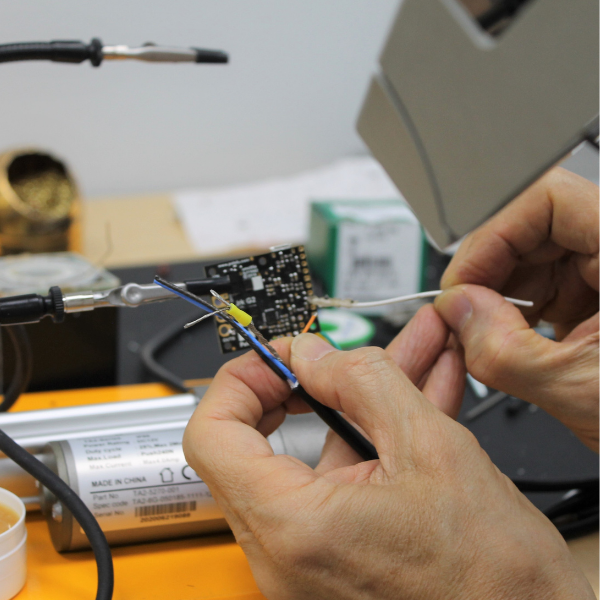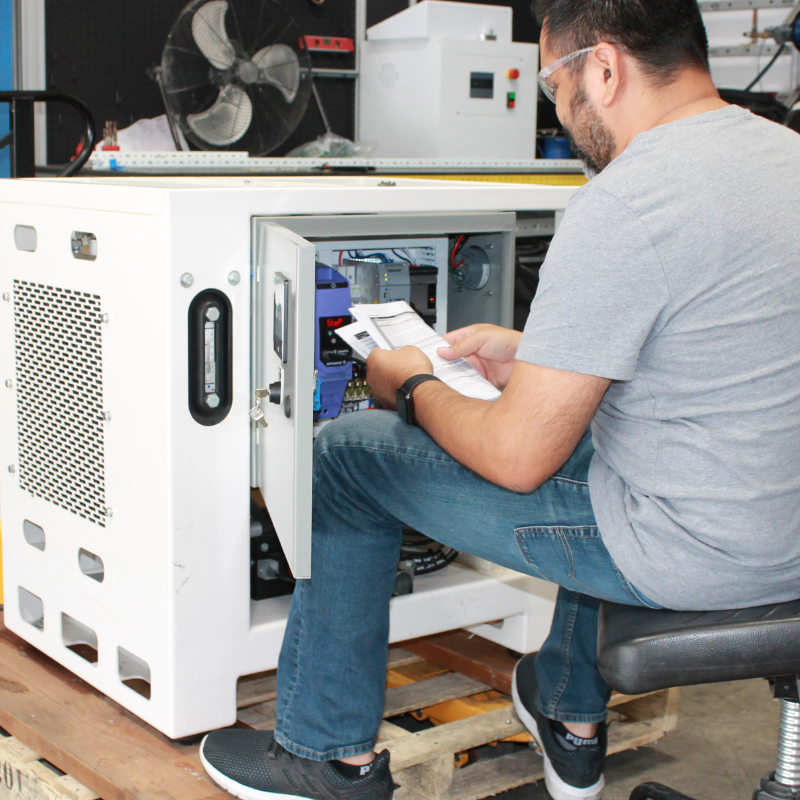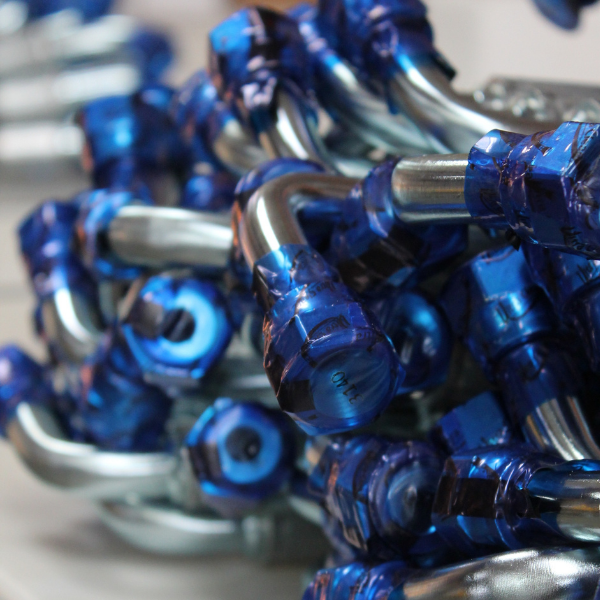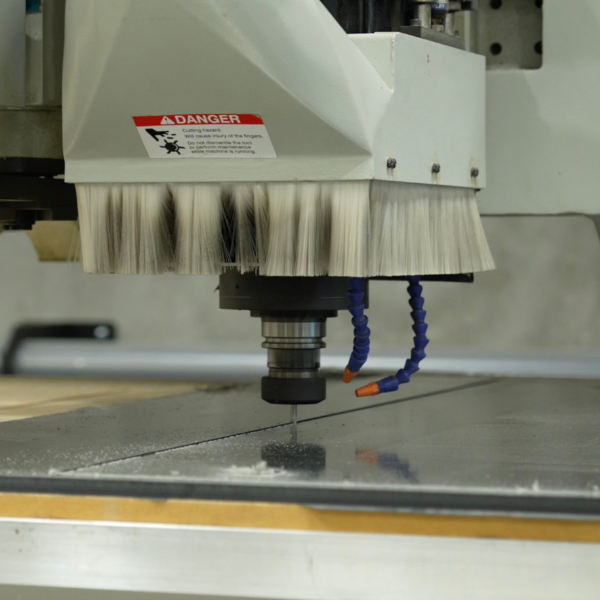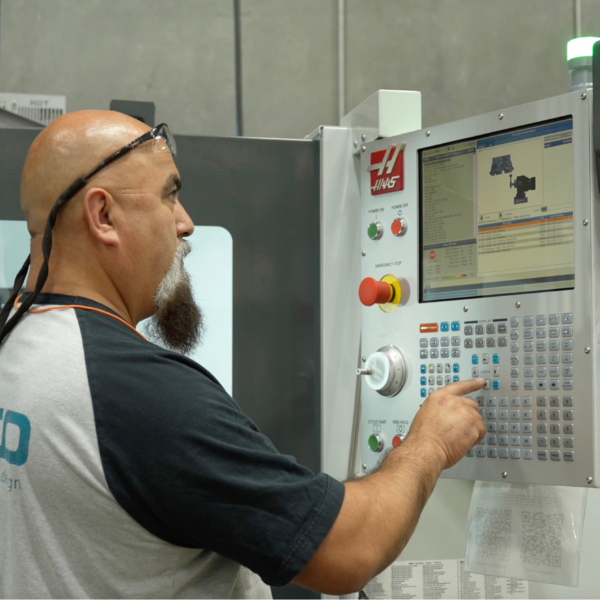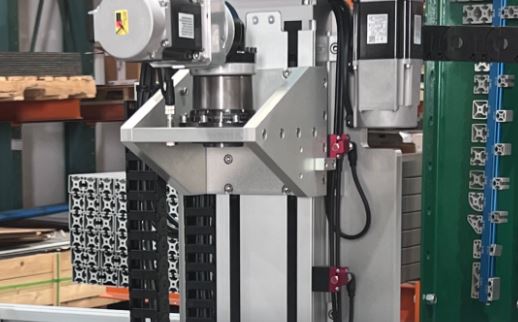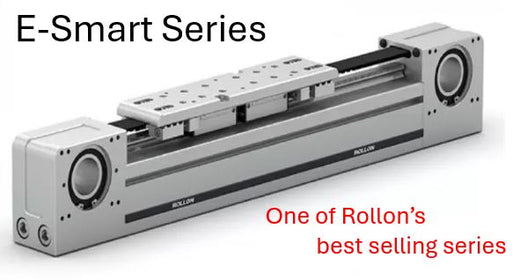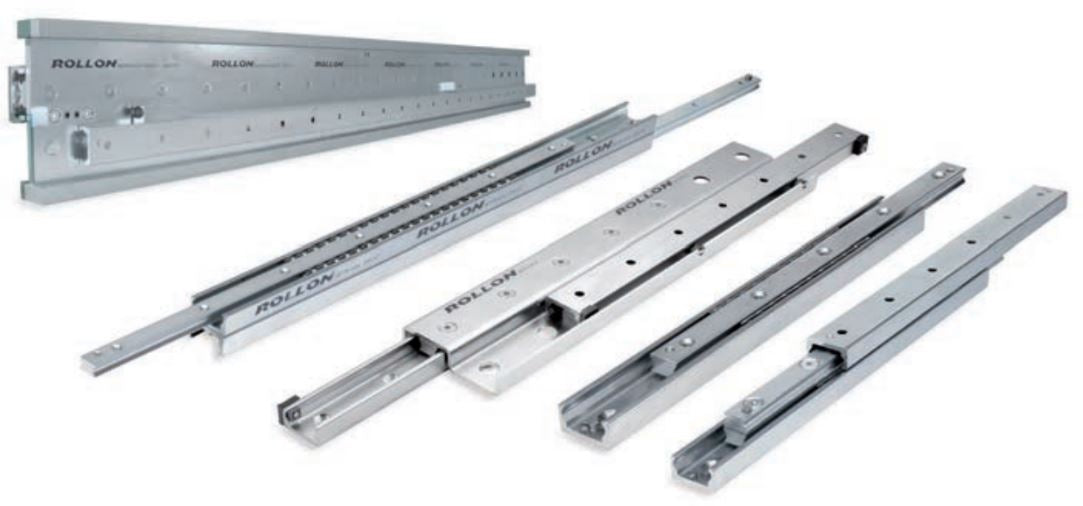ROLLON
High-Tech Distributor Taps Rollon For Electronics Machine
At Rollon, we are proud to collaborate with TECO Technology, one of our trusted high-tech distributors. With over 85 years of industry experience, TECO brings unparalleled expertise and an expansive product portfolio across the industrial automation spectrum, including pneumatics, electrical systems, motion control, hydraulics, and robotics. Their dedicated team of application engineers and industry experts works closely with customers to deliver tailored solutions, providing comprehensive support from initial design to troubleshooting and production. Based in Livermore, California, TECO’s headquarters feature advanced capabilities in machining, assembly, testing, and clean room production, allowing them to seamlessly extend their customers' teams.
In one new wet-bench application for an end user, high-tech distributor Teco Technology integrated an array of Rollon products:
- A Rollon TH Compact ballscrew actuator drives the machine's vertical axis.
- A Rollon E-Smart belt actuator (complemented by an E-Smart idler assembly) drives the horizontal axis; a previous version of the machine used a Rollon Robot 100 for this X axis.
As the demands for automation grow, Rollon and TECO Technology continue to align efforts, driving efficiency and innovation for customers across diverse industries. Together, we ensure our partners receive the highest level of precision and support for their automation needs. A repeat customer approached Teco to improve and expand two older models of an overhead-transfer machine they used to automate the wet chemical cleaning, etching, and rinsing operations on semiconductor and other silicon electronics workpieces.
For this wet-bench application, one previous model used an X axis to execute the horizontal motion moving from tub to tub, while another used a Z-and-θ arrangement for the vertical displacement and rotation within the tub. The end user needed Rollon’s E-Smart belt actuator for long stroke movements at a low-cost solution, as opposed to expensive linear motors and large, long diameter ball screws.
In short, the new wet-bench machine is several feet longer than the old design and is designed to carry a 50-lb payload. It uses a passive gripper at the end of a ballscrew-driven Z-and-θ arm riding on a horizontal axis to grasp baskets of semiconductor wafers (440 mm, 300 mm, and sometimes smaller) and carry them from chemical bath to chemical bath according to a prescribed recipe.
"The end user was essentially asking for a repeat order of a machine with Rollon actuators … only with some re-engineering to satisfy new design requirements,” said Teco Technology engineer Jack Pearson. Delicate semiconductor wafers are carried relatively slowly from bath to bath, and repeatability must stay within only 400 µm or so. The biggest challenge presented by this application is that the machine must be exceptionally compact.
Other vendors’ proposed solutions based on one manufacturer’s compact linear modules (for the new machine’s Z and X axes) failed to satisfy all design objectives. In addition, the end user had limited engineering bandwidth — so could only supply very rough details of what motions and design envelope the machine needed to have.
Teco won the bid to supply the wet bench by essentially designing it and providing it as a turnkey solution. Then the end user simply confirmed the model supported existing facility material supplies and processes and signed off on the machine’s specifications.
“The end user contacted our outside salesperson with a concept that included a box frame with approximate dimensions, required X and Z strokes, and anticipated payload. The solution we provided retained the previous design’s X axis — an extruded frame and Rollon E-Smart belt-driven actuator on top and an idler unit to serve as an outrigger rail on the bottom. On the Z axis, a stout Rollon TH 145 linear table was originally used, but on the updated design we supplied, a Rollon TH 110 linear table for the Z axis was deemed more appropriate,” said Pearson.
The new wet bench θ-axis gearbox connects to a vertically oriented robotic tube which in turn carries the end user’s proprietary end effectors. Teco Technology also integrated the wet-bench machine’s supplied motors and did all the wire routing and cable management — and then (as a value-add feature) incorporated a cable-passthrough panel to the machine to make the in-field electrical connections to the wet bench quick and convenient.
Exhaust fans effectively direct airflow and chemical vapors away from the actuators of the wet-bench machine, so standard component finishes were used. That said, Rollon linear components featuring working rails with specialty surface treatments are suitable where exposure to caustic settings and chemical vapors nonetheless remains a corrosion concern. Other options include subcomponents featuring coatings and materials such as stainless steel, engineered plastic, high-dense chrome plating, and thin dense chrome such as Armoloy. Yet other options to protect actuators in such settings include labyrinth-seal concealment, orienting the actuators’ working elements away from fume sources, and specifying Rollon actuators (for example, the Rollon Robot 100) with housed drive components.
The biggest challenge presented by this application was the need for an exceptionally small form factor. In fact, many semiconductor-manufacturing floors are laid out well in advance, and no tool can extend into aisles. So, machines in such settings are generally fixed to an overall length and height for a given stroke to reach a preset number of tanks below. The machine Teco designed for the end user accesses two rows of eight to 10 or so tanks; the robot tube travels along between the rows and then the θ axis swings the end effectors between tank rows. Such an arrangement was easier to implement than something attempting to use a third linear axis.
“In different designs, we’ve used solutions from the Rollon Robot series as well as the Rollon R-Smart series for their convenient mounting from being one big unit, though two units deliver a bit more cantilever support,” said Pearson.
“Rollon products also helped Teco provide better service with quick-to-market solutions for this wafer-transferring application,” said Rollon engineer and West Regional Sales Manager Felix Velasquez. For more information and solutions to satisfy the requirements of electronics manufacture, visit our Electronics industry page on Rollon.com. Also, stay tuned for more information from Rollon in coming months on aluminum RTUs capable of transporting robots over more than a dozen meters through narrow aisles in cleanrooms, where space is at a premium.
The machine’s Z-axis tube is long to reach way down into various hazardous baths. That means the load is always cantilevered. In some cases, this aluminum tube is wrapped in a protective plastic film to prevent corrosion. Teco Technology ran all the machine’s end-of-travel and home sensor cables through the panel’s left side; encoder cables through its middle; and power and brake cables through its right.
